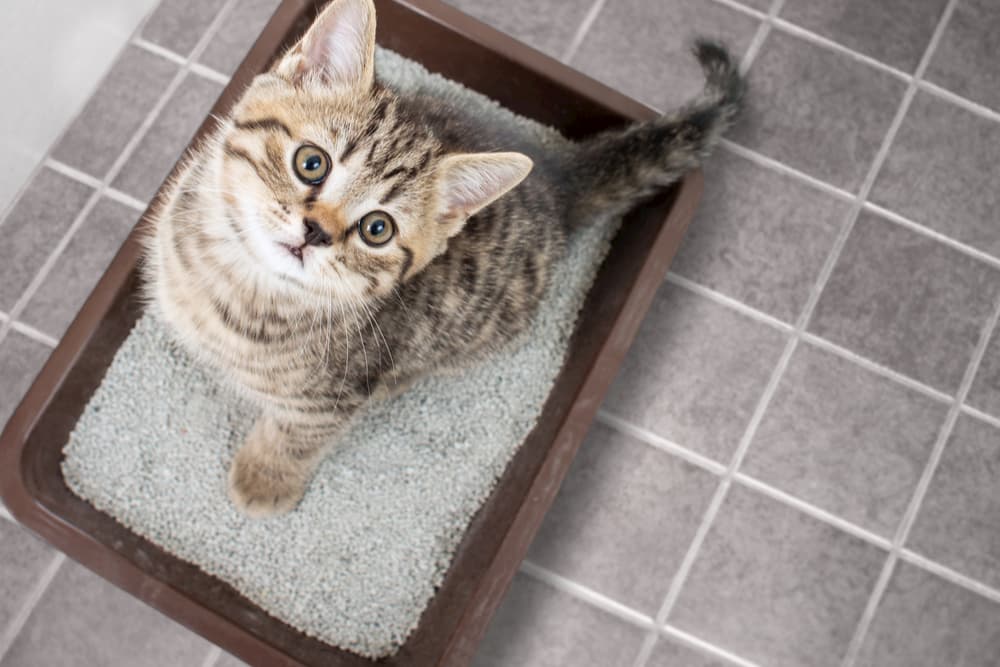Nearly everybody has got their unique perception in relation to 10 Things You Should Never Flush Down The Toilet.

When it pertains to dealing with waste, specifically animal waste, many people commonly resort to the practical choice of flushing it down the commode. However, this seemingly simple solution can have major repercussions for the setting and public health. In this article, we'll explore why flushing animal waste down the toilet is a bad idea and provide alternative methods for proper disposal.
Introduction
Correct garbage disposal is critical for preserving ecological sustainability and public health. While it may appear harmless to purge animal waste down the toilet, it can lead to different concerns, both for the atmosphere and human health.
Risks of flushing animal waste
Ecological impact
Flushing pet waste introduces damaging microorganisms and pathogens right into waterways, which can adversely influence aquatic environments. These microorganisms can pollute water resources and damage aquatic life, disrupting fragile environments.
Public health problems
Animal waste contains dangerous bacteria such as E. coli and Salmonella, which can position significant health dangers to human beings. Flushing animal waste down the bathroom can pollute water materials, bring about the spread of conditions and infections.
Alternatives to flushing
Instead of flushing animal waste down the toilet, there are several alternate disposal techniques that are a lot more eco-friendly and hygienic.
Composting
Composting animal waste is an environment-friendly method to get rid of it. By composting, organic matter is broken down right into nutrient-rich soil, which can be made use of to feed gardens and plants.
Land fill disposal
Taking care of pet waste in a landfill is an additional option. While not as eco-friendly as composting, it is a safer choice to flushing, as it avoids the contamination of water resources.
Animal garbage disposal systems
There are specific family pet waste disposal systems offered that securely and hygienically dispose of animal waste. These systems commonly make use of enzymes to break down waste and eliminate odors.
Actions to correct pet waste disposal
To ensure appropriate disposal of animal waste, comply with these steps:
Scooping and getting waste
Consistently scoop and bag pet waste utilizing naturally degradable bags. This stops waste from infecting the atmosphere.
Utilizing assigned waste bins
Dispose of bagged pet waste in designated waste bins, such as garden compost bins or land fill containers. Avoid flushing it down the commode whatsoever expenses.
Cleaning up litter boxes and pet locations frequently
Frequently clean litter boxes and family pet areas to stop the build-up of waste and microorganisms. Usage pet-safe cleansing products to preserve hygiene.
Advantages of appropriate disposal approaches
Embracing correct disposal methods for pet waste offers several advantages:
Decreased environmental pollution
Correct disposal methods decrease the threat of environmental pollution, shielding waterways and environments from contamination
Reduced danger of water contamination.
By staying clear of flushing pet waste down the toilet, the danger of water contamination is substantially lowered, safeguarding public health.
Improved sanitation and health
Appropriate disposal approaches advertise much better cleanliness and hygiene, producing a safer environment for both humans and pets.
Verdict
Finally, purging pet waste down the bathroom is dangerous to the atmosphere and public health. By adopting different disposal approaches and complying with proper waste monitoring methods, we can minimize the adverse influence of pet waste and contribute to a cleaner, much healthier earth.
What To Do With Dog Poo – The Do's And Don'ts Of Disposing website Of Faeces
Dog poo bins
Some councils provide dedicated dog waste bins in popular dog-walking areas that can take dog poo that has been bagged but you can legally dispose of dog waste in any public litter bin, as long as it is securely bagged. This also applies to your wheelie bin at home.
Do not flush
Water companies do not recommend flushing dog faeces down the toilet because certain parasites can survive the water processing treatment and are potentially harmful to humans. You should also never consider flushing dog poo that has been bagged down the toilet as the bags will not break down and instead create severe blockages in the sewage system.
In the woods
The Forestry Commission promotes a ‘stick and flick’ method for dealing with waste in the woods. This means finding a stick and using it to flick any poo from off the path so that it is out of the way of other walkers. You could also bury it as long as it is not in an area where there might be livestock.
Livestock
Parasites found in dog poo can be transmitted to livestock if they inadvertently eat infected faeces that has been left on grazing land. This could result in the death of sheep or abortion in cattle so you should always make sure you pick up your dog’s waste in fields where livestock could be present.

Frequently clean litter boxes and family pet areas to stop the build-up of waste and microorganisms. Usage pet-safe cleansing products to preserve hygiene.
Advantages of appropriate disposal approaches
Embracing correct disposal methods for pet waste offers several advantages:
Decreased environmental pollution
Correct disposal methods decrease the threat of environmental pollution, shielding waterways and environments from contamination
Reduced danger of water contamination.
By staying clear of flushing pet waste down the toilet, the danger of water contamination is substantially lowered, safeguarding public health.
Improved sanitation and health
Appropriate disposal approaches advertise much better cleanliness and hygiene, producing a safer environment for both humans and pets.
Verdict
Finally, purging pet waste down the bathroom is dangerous to the atmosphere and public health. By adopting different disposal approaches and complying with proper waste monitoring methods, we can minimize the adverse influence of pet waste and contribute to a cleaner, much healthier earth.
What To Do With Dog Poo – The Do's And Don'ts Of Disposing website Of Faeces
Dog poo bins
Some councils provide dedicated dog waste bins in popular dog-walking areas that can take dog poo that has been bagged but you can legally dispose of dog waste in any public litter bin, as long as it is securely bagged. This also applies to your wheelie bin at home.
Do not flush
Water companies do not recommend flushing dog faeces down the toilet because certain parasites can survive the water processing treatment and are potentially harmful to humans. You should also never consider flushing dog poo that has been bagged down the toilet as the bags will not break down and instead create severe blockages in the sewage system.
In the woods
The Forestry Commission promotes a ‘stick and flick’ method for dealing with waste in the woods. This means finding a stick and using it to flick any poo from off the path so that it is out of the way of other walkers. You could also bury it as long as it is not in an area where there might be livestock.
Livestock
Parasites found in dog poo can be transmitted to livestock if they inadvertently eat infected faeces that has been left on grazing land. This could result in the death of sheep or abortion in cattle so you should always make sure you pick up your dog’s waste in fields where livestock could be present.

Do you enjoy reading up on Don't Flush Your Pets Poo Down The Loo, Vet Warns? Try to leave a review further down. We would be pleased to see your opinion about this article. In hopes that you visit us again soon. Sharing is caring. You won't know, you may be helping someone out. Thank you so much for taking the time to read it.
Contact Us Now